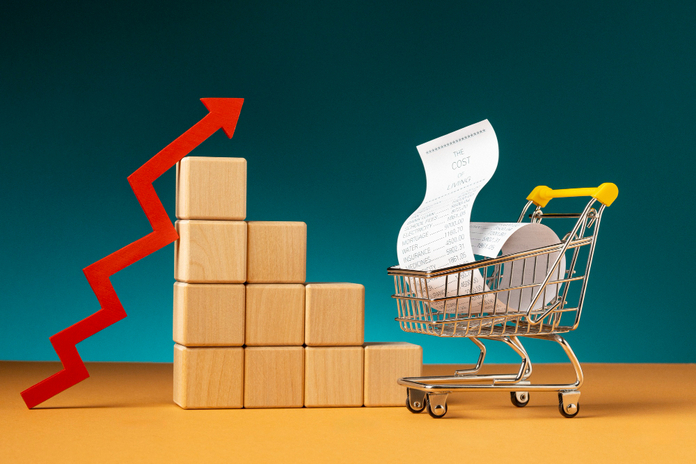US wholesale inflation picked up in June, with prices rising by a larger-than-expected 2.6% compared to the previous year. This increase, the sharpest year-over-year rise since March 2023, signals that some inflationary pressures remain elevated despite broader indicators showing that inflation has continued to ease.
Detailed Breakdown of the Inflation Data
The Labor Department reported that the producer price index, which tracks inflation before it reaches consumers, rose 0.2% from May to June after being unchanged the previous month. Excluding the more volatile food and energy prices, core wholesale prices increased by 0.4% from May and 3% from June 2023.
The uptick in wholesale inflation was primarily driven by a substantial 0.6% rise in services prices, particularly higher profit margins for machinery and auto wholesalers. However, profit margins for wholesalers and retailers, categorized as “trade services” in the producer price report, can be highly volatile. In contrast, a measure of wholesale inflation excluding trade services, food, and energy was unchanged from May to June, which explains why many economists were not overly concerned by the unexpected rise in overall wholesale inflation.
Impact on Goods and Services Prices
While services prices saw an increase, the overall prices of goods fell by 0.5%. Notably, gasoline prices tumbled by 5.8% at the wholesale level, and food prices also declined. The producer price index is often seen as an early indicator of where consumer inflation is headed. Economists pay close attention to the PPI because some of its components, especially healthcare and financial services, are included in the Federal Reserve’s preferred inflation gauge — the personal consumption expenditures index.
Implications for Consumer Inflation and Federal Reserve Policy
Some of the wholesale price components that feed into the PCE index, including certain healthcare costs, came in below expectations, raising hopes for continued progress toward easing consumer price inflation. This development could reassure the Federal Reserve that their efforts to control inflation are bearing fruit.
Friday’s wholesale figures followed a government report on Thursday that consumer inflation cooled in June for the third consecutive month. Consumer prices declined by 0.1% from May to June — the first such drop in overall inflation since May 2020, when the economy was severely impacted by the pandemic.
Overall Economic Trends
Taken together, this week’s price figures and other recent data suggest a continued slowdown in the inflation that gripped the nation three years ago. The rapid economic rebound from the pandemic recession led to deep supply shortages and soaring prices. To combat these price spikes, the Fed raised its benchmark interest rate 11 times in 2022 and 2023, reaching a 23-year high. Inflation has since cooled from its four-decade high of 9.1%, and the central bank is widely expected to begin cutting interest rates in September.
“The big picture is that inflation pressures have moderated over the last two years but are still a bit stronger than the Fed would like them to be,” said Bill Adams, chief economist at Comerica Bank. “With the economy operating in low gear, the Fed thinks the right time to start cutting interest rates is close. But they are planning to cut gradually.”
Rate cuts by the Fed are expected to lead to lower borrowing costs for mortgages, auto loans, credit cards, and business borrowing over time. These cuts could also boost stock prices by making borrowing cheaper and stimulating economic activity.
Public Perception and Political Impact
Despite the overall easing of inflation, the costs of essential items such as food, rent, and healthcare remain much higher than pre-pandemic levels. This ongoing issue is a source of public dissatisfaction and a potential threat to President Joe Biden’s re-election bid.
Yet, despite the lingering inflation pressures and higher borrowing costs, the US economy remains steady, though gradually slowing. Hiring remains solid, and unemployment is relatively low, providing Americans with unusual job security in uncertain economic times.
Conclusion
The rise in US wholesale inflation in June underscores the persistent challenges in fully curbing inflationary pressures. While consumer inflation shows signs of easing, the ongoing volatility in wholesale prices suggests that the Federal Reserve’s cautious approach to interest rate adjustments is warranted. As the US economy navigates these complexities, the focus remains on achieving sustainable growth and stable prices.
Featured Image: Freepik









